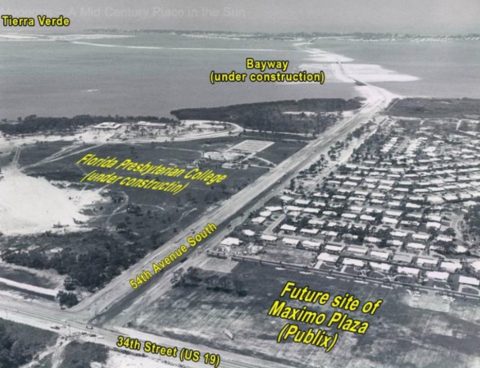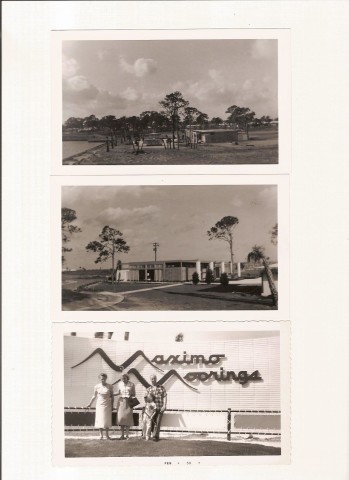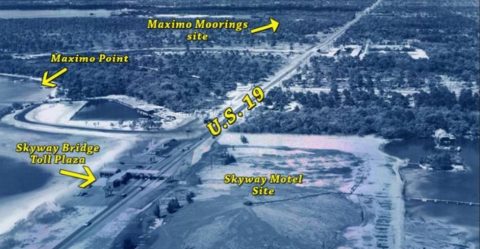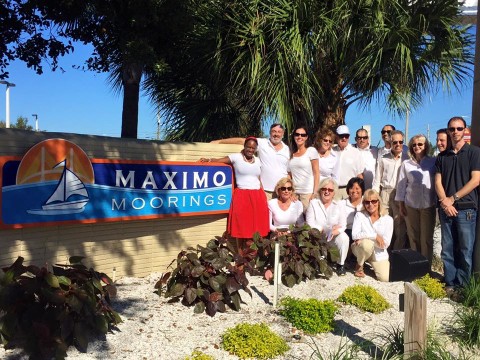The numerous shell mounds that have been found in and around Saint Petersburg are indicative of inhabitants of Pinellas Peninsula from long before Europeans began to explore the Gulf Coast of Florida in the 1500s.

The first settler that we know of in this area was Antonio Maximo, the namesake of Maximo Moorings. He was given a land grant in 1843 for services he performed during the Seminole War. At the south end of the peninsula he established a fish ranch. William Bunce joined him in supplying fish to Cuba 3 years later. In the hurricane of 1848 the land was destroyed and their possessions disappeared into the Gulf. They left and never returned.
Within a few years squatters took over the land raising cattle and establishing small citrus groves.

In 1873 Dr James Hackney bought 600 acres of land, built a home and cleared the land for farms and groves.
After General John C. Williams first visit to the peninsula in 1875 he purchased 1600 acres. His attempts with northern farming techniques were unsuccessful so he decided to make a town with rail facilities instead.
It is unknown how the city was named, however it is suspected that General Williams wanted to name the town after his birthplace but Peter Demens, the builder of the Orange Belt railroad and it’s extension here, wanted to name it after the Russian City, Saint Petersburg. Demens got his wish and General Williams named the Detroit Hotel after his birthplace instead.
Before the turn of the century the census shows the population to be less than 300 people. The new railway began to bring vacationers to a cooler climate and the population grew. The first major growth spurt happened because of the freeze of 1894/95 however. Citrus groves on Pinellas Point survived the low temperatures. Growers whose groves had frozen came to Saint Petersburg to start over.

In 1956, the population had grown to over 100,000 people. Babe Wolosoff, one of the developers of Maximo Moorings, and a friend were interested in renting a slip for a boat that had just been purchased. There were only 2 marinas at the time and they were both full with waiting lists. It was then that Wolosoff decided to develop the several hundred acres he’d recently purchased with a marina as it’s center piece. By the end of the 50s the Maximo Moorings Marina had been dubbed ‘The World’s Largest Covered Marina’. The dirt dredged during the construction of the marina was used to level the nearby land and the residential development Maximo Moorings was created.

At the entrance to Maximo Moorings our nation’s flag flies 24 hours a day in the center of Fuller Circle, named after
the broker who sold the land to Wolosoff which eventually became our beautiful neighborhood.
The original structure in the middle of Fuller Circle was a tall multi-level fountain arising from a large round pool at the base. Water was pumped up 30 to 40 feet high and splashed downward on overflowing dishes or platforms. It was illuminated with flood lights at night and was a pretty spectacular centerpiece. As time passed however, the cost of maintenance of the pool pumps and lights, the cost of electricity and water and the problem of water spray on cars on windy days caused the structure to be removed and replaced by our impressive flag pole.
 Fast forwarding 65 years later, in early 2015, Maximo Moorings’ Former President Nigel Haywood and associated board members decided to change the Neighborhood’s logo/signage. They formed a Logo Design Contest for Neighbors to submit their own artwork for consideration. Shortly after the contest, a beacon was sent out with submitted designs allowing the neighborhood to cast their vote.
Fast forwarding 65 years later, in early 2015, Maximo Moorings’ Former President Nigel Haywood and associated board members decided to change the Neighborhood’s logo/signage. They formed a Logo Design Contest for Neighbors to submit their own artwork for consideration. Shortly after the contest, a beacon was sent out with submitted designs allowing the neighborhood to cast their vote.
The board members tallied the votes which lead to the winning design. It was then presented in the next Beacon and work immediately began with the City of St. Petersburg to obtain signage approval and funding.
On December 12th, 2015, the sign was officially revealed to the public.
In Early 2016, following the recent signage update, a website was considered as the next major improvement to the neighborhood. After many in-depth meetings, the board decided to move forward and let the heavy work begin.
On April 29th, 2016, a brand-new website is officially released to Maximo Moorings Neighborhood and to the world.
